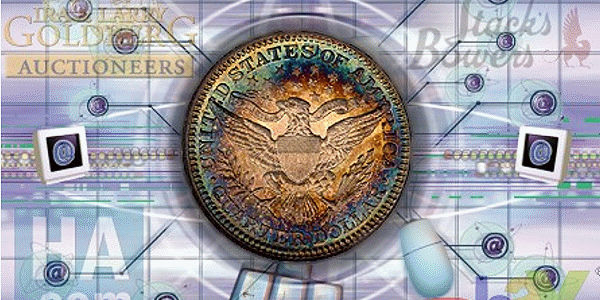
By Jeff Garrett for Numismatic Guaranty Corporation ……
The widespread availability of auction prices for rare coins has created a world of transparency that has profoundly changed the hobby.
As mentioned in my last article about the purchase of the Greysheet, one of the hardest jobs of its new owners will be how to report prices based on auction records. They have publicly stated that auction records will be a new focus of price reporting. This is an extremely timely subject, as there has been so much discussion recently about how to report prices for collectors and dealers in today’s market. The rare coin market has matured tremendously in the last 10 to 15 years. Technology advancements have also played a big role in how rare coins prices are tracked and reported. The world of numismatics has changed a great deal in just the last few years and it will probably change even more in the coming years.
A little history of how auction records for rare coins has evolved might be of interest. One of the first attempts of tracking auction records was done by Bernard Rome. Starting in the early 1980s, he published annual books with listings of coins sold at auction the preceding year. A user could see a listing and then refer to the original auction catalogue for more information. The books were popular with high level professionals, but were difficult to use and certainly impractical to drag along to coin shows.
In the late 1990s, John Dannreuther and I decided that we needed better tools for numismatic research. We both had book projects in the works and a better reference to locate coins that sold at auction would make things much easier. The use of desktop computers and Excel spreadsheets made the task of assembling a searchable database possible. This was before auction companies could easily upload auction records. We hired college students and others to manually input 10 years of auction records into our database. We also included the results of important sales older than that.
 The use of these databases were extremely popular with professionals. This information provided an almost unfair advantage when buying coins. Many price guides of the day were inaccurate or offered incomplete information. Having these auction records in a searchable format on a laptop at coin shows or auctions was a huge advantage. Fast forward 15 or 20 years and we all have access to this information. Auction houses offer the information at no charge to dealers and collectors alike. NGC also offers auction records on its website ngccoin.com. The use of auction records for pricing is now easily available on your mobile device.
The use of these databases were extremely popular with professionals. This information provided an almost unfair advantage when buying coins. Many price guides of the day were inaccurate or offered incomplete information. Having these auction records in a searchable format on a laptop at coin shows or auctions was a huge advantage. Fast forward 15 or 20 years and we all have access to this information. Auction houses offer the information at no charge to dealers and collectors alike. NGC also offers auction records on its website ngccoin.com. The use of auction records for pricing is now easily available on your mobile device.
The widespread availability of auction prices for rare coins has created a world of transparency that has profoundly changed the hobby. Price guides give an idea of a coin’s worth; auction prices are what an actual coin sold for. Many consider auction prices to be the most important factor when making a rare coin purchase. The auction records are especially important for thinly traded rarities, split grade coins and grades not listed in price guides.
Auction records have several drawbacks as any numismatic professional can attest. The problems remind me of a favorite saying that my young daughter sometimes uses—TMI, or too much information. Auction records can sometimes be very confusing for even the savviest collector. With a few clicks, you can probably locate 10 or more auction records for the same coin in the last few years. The problem is that many of the prices can vary an incredible amount. There are so many variables that result in the sale price for a coin of the same grade. These include quality, timing of the sale, attendance of the sale, pedigree, CAC stickers, crack-out candidates and much more.
Anyone using auction records is encouraged to closely study the information before making a buying decision. A low auction result does not mean the coins will be available near those prices. Also keep in mind that you cannot purchase any particular coin at auction for the price listed in the database. The price listed was the final hammer price plus buyer’s charges. A successful bid on your part required at least one extra bidding increment. The final buyer may have been willing to go much higher.
The biggest price variance is a result of quality. Coins with amazing toning or superb originality might have auction records in multiples of inferior examples. I have stated many times the educational value of examining auction lots in person to more fully understand why coins in the same grade bring different prices. By doing this you will better understand which coins will be more desirable when it comes time to sell your collection.
Rare coin pricing will surely be more advanced in the near future. We have come a long way from when the Red Book, published on a yearly basis, was the golden standard. Collectors will benefit as pricing and information become more transparent. Many rare coin dealers will have trouble as margins are squeezed by the easy availability of this disruptive technology. Dealers who embrace the change will be successful, others not so much. I have long believed that more information about rare coins is good for the hobby. Information will give buyers the confidence to spend larger sums, and this will expand the hobby in the long run.
* * *




